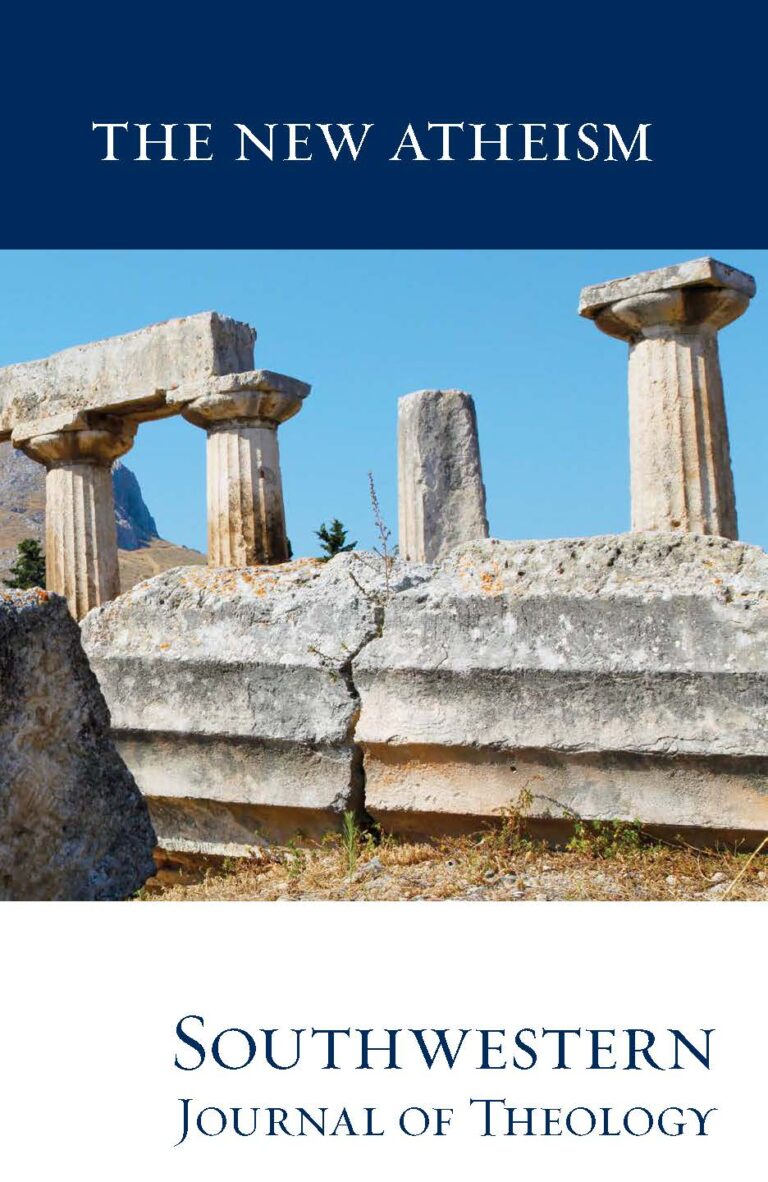
The New Atheism
Southwestern Journal of Theology
Volume 54, No. 1 – Fall 2011
Managing Editor: Malcolm B. Yarnell III
“The discovery of these Baptist letters within the autograph albums of the Thomas Raffles Collection and the Methodist Archives at the John Rylands Library of Manchester came about largely by accident” (xxi). So begins editor Timothy Whelan’s volume of treasures collected and published for the benefit of all who take interest in English Baptist heritage. What started as the search for a single letter resulted in the discovery of more than 330 Baptist related letters, most of which were undocumented.
Whelan, associate professor in the department of literature and philosophy at Georgia Southern University, recounts in his introduction how Thomas Raffles (1788–1863), the longtime pastor of Great George Street Chapel in Liverpool, amassed a collection of letters and portraits. Upon his death, Raffles’ collection was first given to the Lancashire Independent College and then later purchased and placed in the John Rylands Library. Whelan notes that “Raffles owned the largest private collection of Baptist letters from the late eighteenth and early nineteenth centuries ever assembled” (xxviii). Of particular interest for Raffles was the correspondence of John Sutcliff, William Carey, and Andrew Fuller. In 1844, Joseph Angus, secretary of the Baptist Missionary Society (BMS) and president of Regent’s Park College, made arrangements with Raffles for the donation of two volumes of letters related to the BMS to come upon Raffles’ death. While this took place in 1863, several other volumes remained in Manchester largely untouched and unnoticed. With the arrival of Whelan’s work, “now, after more than a century, a full accounting can be made of all the Baptist letters originally collected by Thomas Raffles and his son” (xxxi).
In addition to the Raffles Collection, Whelan also discovered a significant number of Baptist letters by John Gill, Robert Hall, Samuel Pearce and others contained within the Methodist Archives, a collection that came to the John Rylands Library only in 1977. All these findings leads Whelan to conclude that the Rylands Library “stands as one of the more significant depositories of Baptist archival materials in the United Kingdom” (xxxvii). Thankfully, through the editorial labors of Whelan, a portion of that depository is now available to a wider audience.
Whelan organizes his transcriptions of 267 letters into seven parts. The reader will appreciate the abundance of detailed footnotes that help provide context to each letter as well as establish connections between the authors, recipients, or other persons mentioned. One additional value to Whelan’s volume is his 126 page “biographical index.” This carefully prepared index provides a short description of each person referenced in the letters as well as further related documentation. Additional indices allow the reader to locate with ease specific individuals.
As one reads through this volume it is evident that the letters themselves are indeed treasures. Consider the 11 May 1792 entry from William Carey to John Sutcliff prior to the Northamptonshire Baptist Association meeting where Carey would preach his famous sermon that would lead to the formation of the BMS. Carey writes, “I have sent you 25 Copies of my Enquiry. Accept one yourself—and sell as many as you can—I hope to see you as you go to the Association” (60). Or consider the 6 August 1794 letter from Andrew Fuller to John Rippon stating that “for the first time I rec[eived] a Letter from each of our Brethren in India that are all well and as happy as can be expected” (68). Fuller here refers to the first report he received from Carey after Carey’s departure in April 1793. Finally, consider the candid report from Carey to his sister, Ann Hobson, on 27 Nov 1798, “No one expects me to write about experience, or any of the common topics of Religion; nor to say anything about the Doctrines of the Gospel, but News, and continual accounts of marvelous things are expected from me. I have however no news to send, and as every thing here is the same, no Marvels” (92).
Baptist Autographs in the John Rylands University Library of Manchester, 1741– 1845 presents both the historian and churchman with a resource worthy of mining for historical verification, personal anecdotes, insight into the lives of great men and women, and examples of piety in adversity and blessing. Aside from the opportunity to search for other previously undiscovered letters in Manchester, the reader will no doubt appreciate the privilege of reading the treasures provided at the result of the labors of Timothy D. Whelan.





